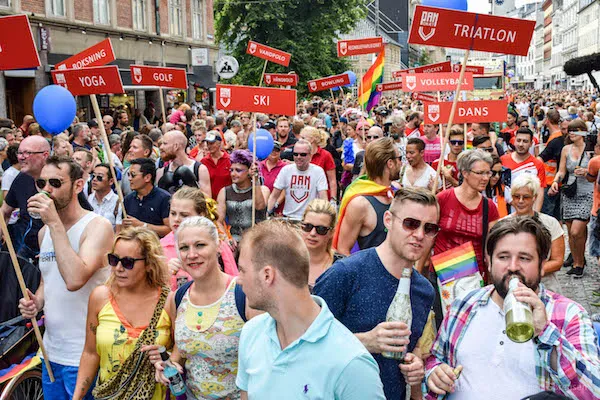
Meet Pan Idraet’s Paul Brummitt to get the low-down on one of Denmark’s leading community sports organisations.
You cover an enormous breadth of sports, 17 in all, what are some of the logistical challenges for Pan Idraet?
The main challenge is access to facilities. Like most other sports clubs in Denmark we have the status as a public education organization which means we can get free access to sports facilities from the City of Copenhagen.
However clubs for children and the disabled get priority, so it’s a battle every year to retain the best times in the pool, on the pitch, and in the sports halls. On the positive side having capacity issues means we are a successful club!
Are all of the sports equally strong and well-supported or are there some sports that are stronger than others?
The largest is aquatics, which goes by the name of Copenhagen Mermates. There are over 150 members who swim, play water polo and do triathlon. Then come badminton and dancing each with around 100 members, down to the smallest which is currently golf, but they are growing fast. Astanga Yoga is also a success story — their membership is increasing and their prominence in the club has become quite large.
Being established for over 30 years is a remarkable milestone for Pan Idraet and must make it one of the oldest LGBT sports organisations in the world. Is there still a need for Pan Idraet in the Denmark of today?
Undoubtedly yes. Just take Pan Football — it’s quite common for them to experience homophobia when they play straight teams. We even took the issue to the sports minister in order to get the Danish Football Association to come to a meeting about it. Also for many members, we are simply a social club for the sport they like to do — there are pensioners’ clubs, women’s clubs, clubs for pregnant women — so why not one for us?
What are some of the benefits for people that get involved in sport?
Surveys show that gay men over 45 in particular have a high risk of poor health and even suicide. One of the theories is that unlike straight men, most don’t have children so they have no reason to stop their 20-something party and drinking habits once they reach their 30s and into their 40s.
Loneliness is a second key factor — friends you only know from the bar of your local pub are fine, but people easily get stuck in a social circle that revolves around drinking and smoking. Joining a sports club helps change that. Of course, many of us still drink, and a few smoke, but having the social circle that regular sport provides is a great way to combat loneliness and get the social contact away from the bar stool.
What have been some of the key milestones or highlights during Pan Idraet’s 30 years?
The two highlights have to be when we held Eurogames in 2003 and World Outgames in 2009.
The club was founded as Homo Swimming in 1984 at the height of the AIDS panic — it’s strange to think today that gay men suddenly became unwelcome in regular swimming clubs — and how illogical it was that having a separate lane for the club in the pool meant that fears were dispelled — HIV can’t possibly cross the lane rope!
For a year or so after World Outgames, the club suffered from exhaustion. People concentrated exclusively on their own sport, there was very little interaction between the various sport sections and hardly anyone turned up to Pride to march under our banner.
However with our current board things are really moving. We have digitalised member administration and finance, integrated it with a new website, collaborated on projects with other LGBT organisations in the city and really built a strong international profile.
What does the future hold for Pan Idraet?
The sky is the limit — we have just added hockey and are working on boxing. We’d love to have a clubhouse as a base but realistically, rents are so high in the city that we would need to increase the membership fees far too much to be able to pay.
Analyzing our potential membership base, we really ought to be able to triple our numbers — but capacity issues in city facilities makes that difficult.